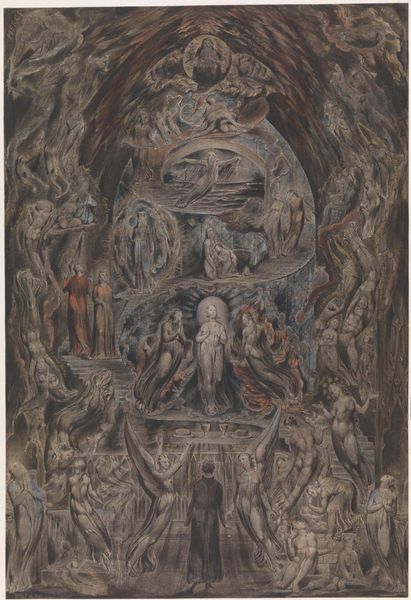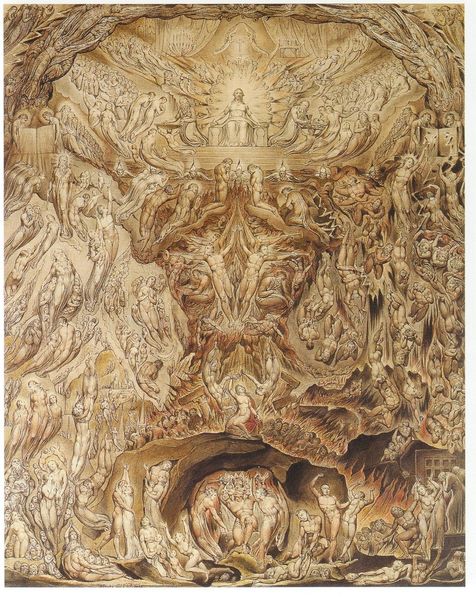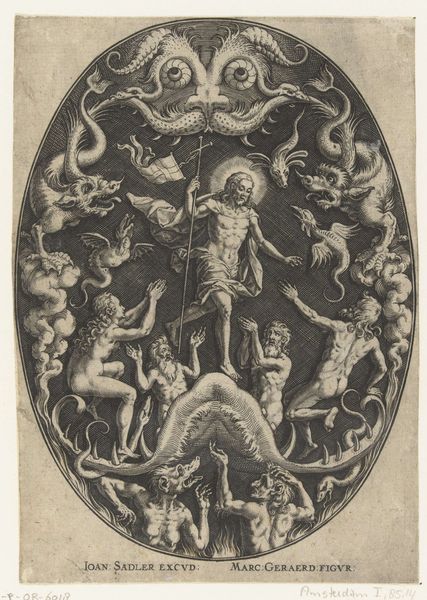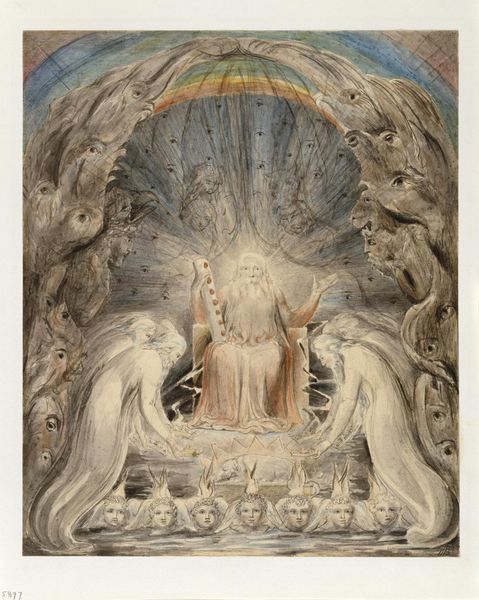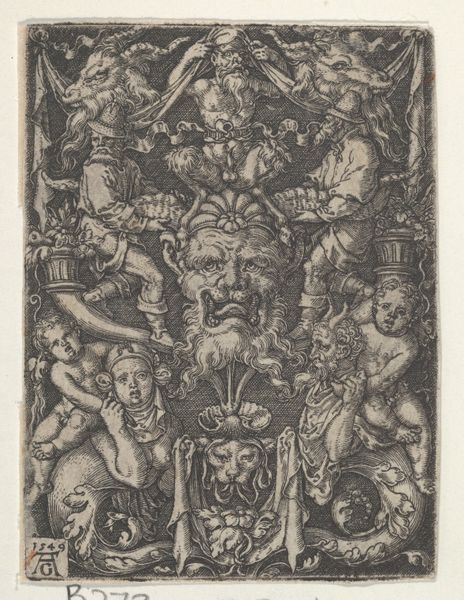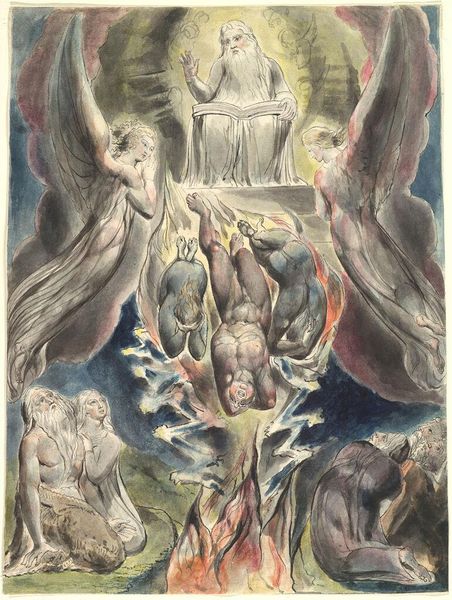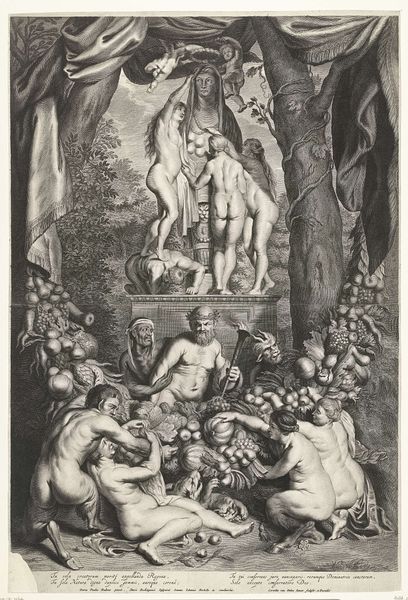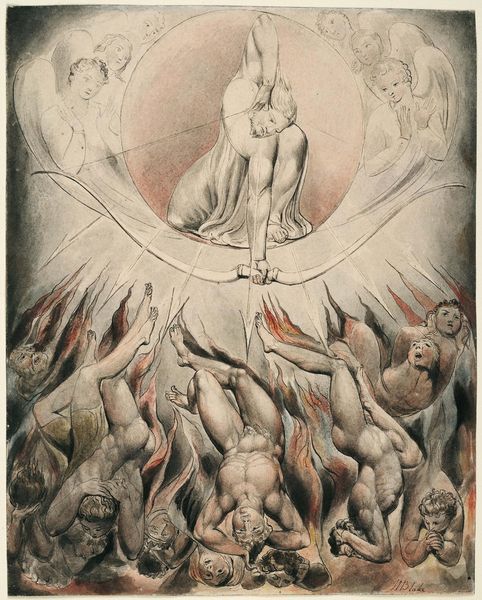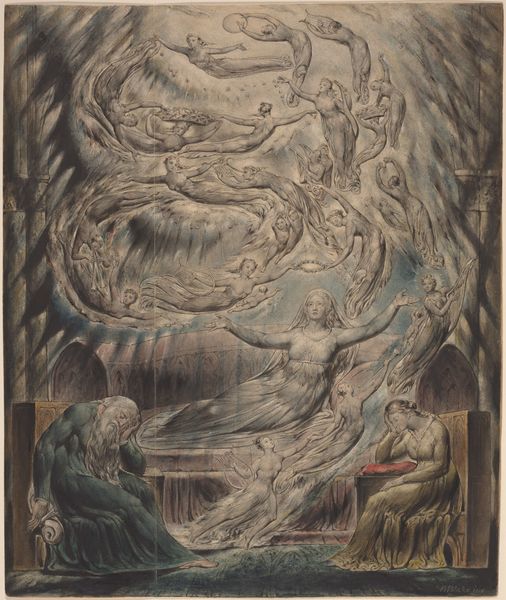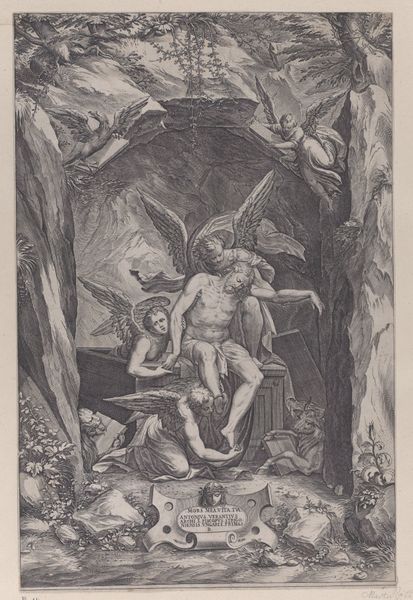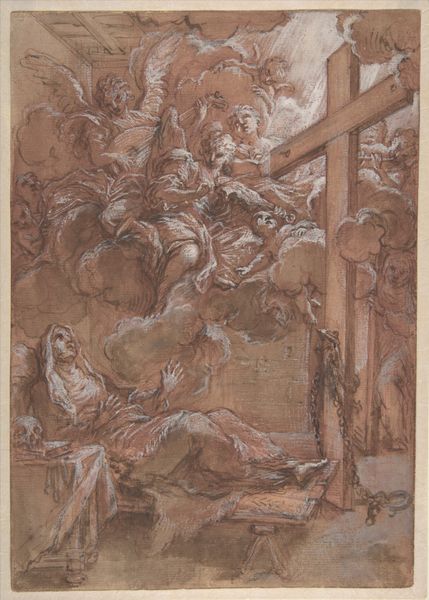
Dimensions: support: 431 x 292 mm
Copyright: CC-BY-NC-ND 4.0 DEED, Photo: Tate
Editor: Here we have William Blake's Epitome of James Hervey's 'Meditations among the Tombs'. It's undated, and rendered on support of 431 by 292 millimeters. It strikes me as a very theatrical, almost staged scene. What are your thoughts? Curator: Notice how Blake manipulates the materiality of watercolor and ink to construct a vision of spiritual ascent? The layers of figures, the sepulchral tones... Aren't they suggestive of a society wrestling with mortality and faith in an increasingly industrial world? Editor: That's interesting. So, you're seeing the production of the image itself as reflective of the anxieties of its time? Curator: Precisely. Blake uses readily available materials to challenge the grand narratives promoted by the establishment. How does this impact your understanding? Editor: It definitely makes me think about the social context of the work, and Blake's position within it. Thank you! Curator: A pleasure. Considering the materials helps unlock the art's deeper meaning.
Comments
tate 8 months ago
⋮
http://www.tate.org.uk/art/artworks/blake-epitome-of-james-herveys-meditations-among-the-tombs-n02231
Join the conversation
Join millions of artists and users on Artera today and experience the ultimate creative platform.
tate 8 months ago
⋮
James Hervey (1714-58) was a writer of devotional texts. His popular Meditations Among the Tombs was published in 1746 and it was often reprinted. The subject of the book is death, and the author dwells particularly on the grief caused by early death, and on the eventual re-uniting of the parted in heaven. Hervey, his back to the viewer, is seen in the foreground of the picture. At the foot of the stair which winds heavenward to God, sits a widow with the bodies of her husband and children. Inscriptions beside the other figures help to explain the narrative.The design of this complex arrangement is similar to that of the celebrated painting of the Last Judgement in the Sistine Chapel in Rome by Michelango, an artist Blake admired. Gallery label, August 2004
